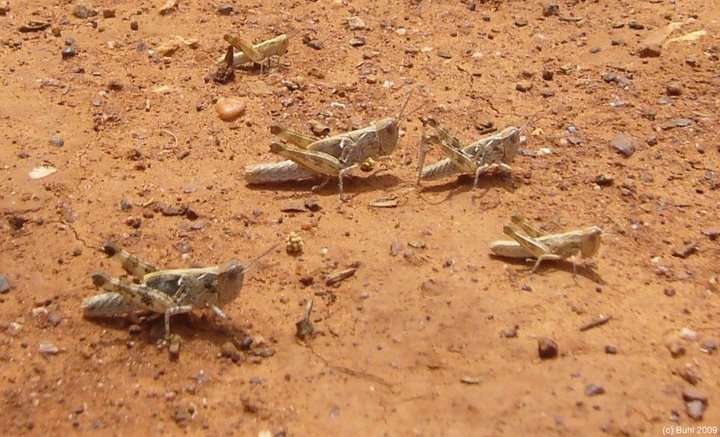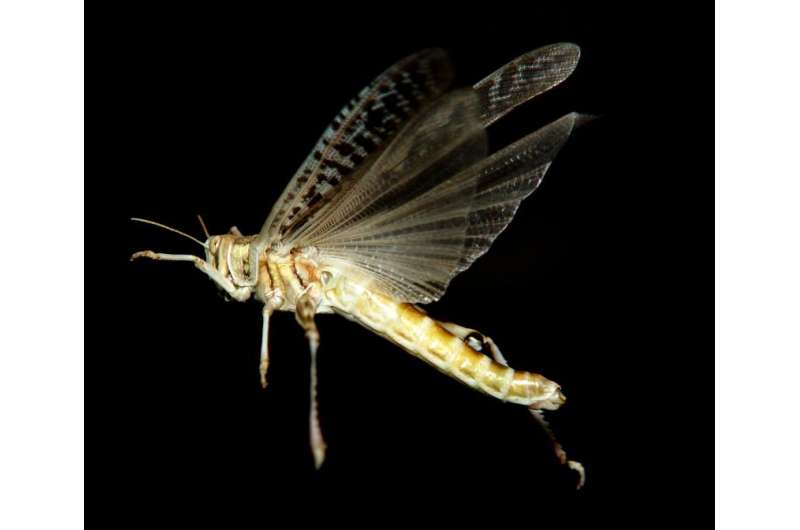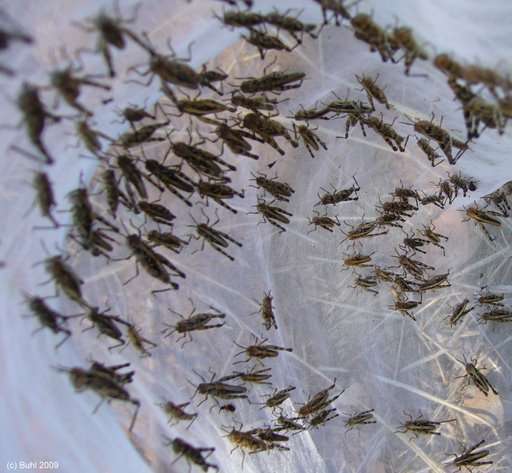Locusts interact with several neighbours to swarm together

Swarming locusts interact with at least two of their neighbours when aligning themselves in order to march in the same direction, says new research led by our mathematicians.
During swarming, locusts tend to move in the same direction as their neighbours, but then spontaneously switch direction together as a group, a behaviour also seen in other animal groups such as starlings and fish.
The more locusts join the swarm, the less directional switching occurs and the more stable the swarm becomes.
During major plagues, swarms can comprise up to a quarter of a billion locusts each eating their own body weight in food each day. They can migrate across 20 per cent of the total land surface of the world, wreaking devastation on the crops and livelihoods of farmers.
Mathematically modelling the behaviour of these swarms could, in the future, lead to new strategies for controlling or dispersing them.
Modelling locust interactions
A team of Bath mathematicians, in collaboration with the Universities of Warwick and Manchester, analysed the movements of different group sizes of locusts filmed by colleagues at the University of Adelaide. They used these data to study the interactions between individual locusts and create a model that mimicked the collective behaviour of the insects.

Their findings, published in the journal Â鶹ÒùÔºical Review E, show for the first time that locusts interact with several of their immediate neighbours when deciding the direction in which to "march". Previous research by the team showed that locusts tend to align themselves with their neighbours so their vulnerable flanks are not exposed to cannibalistic attack.
Their model also predicts that locusts are sensitive to external changes in the system such as wind conditions which can disrupt the interactions between the locusts, making the swarm less stable.
Understanding the rules of locust behaviour
Dr Kit Yates, from our Department for Mathematical Sciences, explained: "We can describe the locusts' behaviour using quite simple rules and have demonstrated for the first time that locusts have to interact with multiple neighbours in order to swarm in the way they do.
"We already know that animals, including humans, change their behaviour when they are in a crowd, following cues from their peers. In the locust study, we found that small groups of locusts are unstable and tend not to march together – a behaviour mimicked in our model.
"With larger groups, the swarms tend to be more stable, with less switching of direction, so rogue individuals travelling in the opposite direction don't have as significant an effect on the behaviour of the whole group.

"A better understanding of how individuals behave in these groups could help us develop new strategies of disrupting swarms. Our model could also be applied to other swarming insects such as crickets, which are a major problem in Australia, and even in crowd dynamics of humans."
Modelling locust 'switching'
Co-author on the study Dr Louise Dyson, Research Fellow at the University of Warwick, added: ""This is the first time that it has been possible to quantitatively compare the locust swarming experiment with a mathematical model.
"Our model successfully reproduces the switching behaviour, in which a large group of locusts may collectively move together, only to collectively reverse direction after a period of time.
"We can even predict the average amount of time before a reverse of direction, dependent on the size of the locust group.
"Our model helps us to understand how the individual decisions made by each locust using the information available to them can result in the dynamics we observe in the group as a whole."
More information: Louise Dyson et al. Onset of collective motion in locusts is captured by a minimal model, Â鶹ÒùÔºical Review E (2015). DOI: 10.1103/Â鶹ÒùÔºRevE.92.052708
Journal information: Â鶹ÒùÔºical Review E
Provided by University of Bath
















